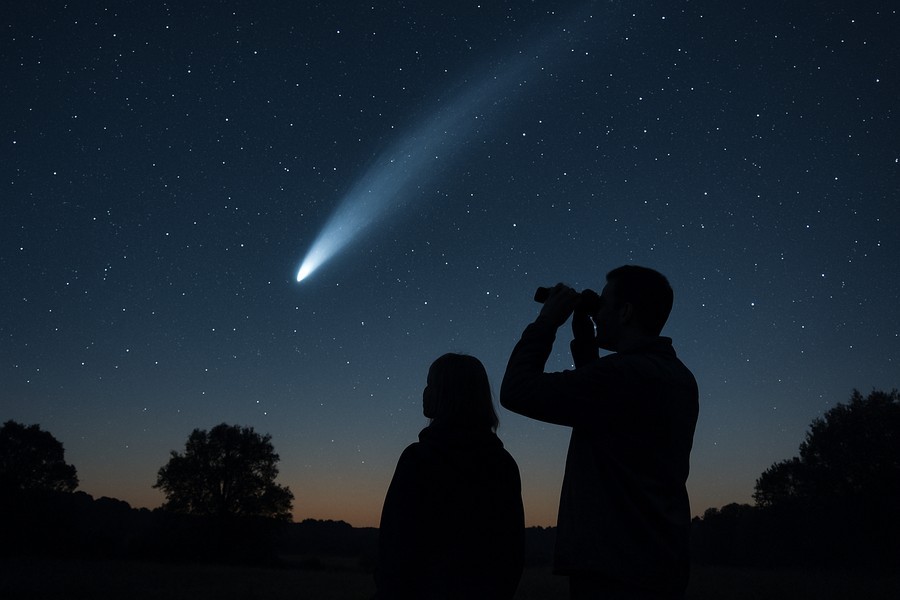
Catching a Glimpse of Comet C/2025 R2 (SWAN) in the Fall Night Sky
There's a new star in the night sky this October and it's not just any star. It's the bright and awe-inspiring Comet C/2025 R2 (SWAN) that is zooming past our planet and lighting up the cosmos.
The Discovery and Transformation of the Comet
The comet, known as C/2025 R2 (SWAN), was first spotted on Sept. 10 by an avid astronomer from Ukraine named Vladimir Bezugly. Since its initial sighting, this comet has been growing brighter, raising the possibility that we might be able to see it with the naked eye as it comes closer to Earth later this month.
As the comet gets closer to the sun, the heat from the sun transforms the frozen materials in the comet's nucleus from solid to gas in a process known as sublimation. This transformation causes a gaseous shell to form around the comet, which is then swept away by solar winds, creating a long tail of dust and gas. This tail reflects sunlight and makes for an impressive spectacle that, if we're lucky, could be visible from Earth without the need for any special equipment.
The Comet's Journey Near the Sun
On Sept.12, C/2025 R2 (SWAN) had its closest encounter with the sun, a point known as perihelion. At this point, it was approximately 47 million miles from the sun, which is about half the average orbital distance of Earth.
Understanding Magnitude
Magnitude is a way to measure how bright things appear in the night sky. The brighter the object, the lower the magnitude number. For example, the brightest stars you see have a magnitude of around +1. A full moon, which is brighter, has a magnitude of -13, and the sun, the brightest object of all, has a magnitude of -27.
Recent data gathered by the Comet Observation Database (COBS) shows that C/2025 R2 (SWAN) has a magnitude of 5.6. This means it could potentially be seen as a very faint object in a clear, dark sky. However, you'll have a much easier time spotting it if you use binoculars or a telescope.
Spotting Comet C/2025 R2 (SWAN) in October
You can try to spot C/2025 R2 (SWAN) in the evening sky throughout October. Your best bet is to look for it in the hours just after sunset, before it gets too low on the south-southwest horizon. On Oct. 16, the comet will be located about 5 degrees to the upper left of the star Xi Serpentis in the eastern part of the constellation Serpens. If you're not familiar with these stars, a stargazing app on your phone can help you find them.
As the month progresses, C/2025 R2 (SWAN) will pass above the well-known "teapot" asterism in the constellation Sagittarius and move through the stars of the constellation Scutum. By the end of the month, you'll be able to see this visitor from our solar system above the southern horizon, between the bright stars Sadalmelik and Sadalsuud in the constellation Aquarius. You'll also see the half-lit moon shining below it.
Best Ways to View the Comet
If you're hoping to catch a glimpse of C/2025 R2 (SWAN), we recommend checking out guides on the best binoculars and telescopes for stargazing. If you want to take pictures of the comet, look for a guide on how to photograph a solar system comet with a DSLR camera.
